Many parents, teachers, and even therapists feel stuck when it comes to planning ABA therapy activities. They want to help their child grow, but don’t always have the tools or ideas to make learning engaging.
In this article, we’ll share a complete list of fun and effective ABA therapy activities that support communication, social interaction, motor development, and more. These ideas are simple, flexible, and backed by proven strategies—perfect for parents, caregivers, and professionals looking to make each session count.
Types of ABA Therapy Activities (with Fun, Engaging Examples)
I. Communication Activities
Purpose: Build expressive and receptive language skills
Labeling Game with Flashcards or Real Objects
- A therapist or caregiver shows a flashcard or real item (like a spoon or toy car) and prompts the child to label it.
- You can start with single words, like “apple” or “ball.”
- For more advanced learners, ask them to describe color, shape, or function (e.g., “It’s round. You bounce it. It’s a ball!”).
“I Spy” for Descriptive Language
- Start with simple clues: “I spy something red.”
- Then increase difficulty: “I spy something that you wear on your feet.”
PECS (Picture Exchange Communication System ) or Visual Boards to Request Items
- The child hands a picture or selects an image on a board to request something (e.g., juice, a toy, or a break).
- Over time, they learn to build full requests like “I want bubbles.”
II. Social Skills Activities
Purpose: Teach interaction, cooperation, and emotional understanding
Turn-Taking Board Games
- Simple games like Chutes and Ladders, Uno, or even a custom-made spinner game.
- Start by modeling how to take turns.
- Use a visual turn card or verbal prompts like “My turn, your turn.”
- Reinforce each successful turn with praise or tokens.
Pretend Play Scenarios
- The child can practice asking for items, taking orders, or waiting in line at a restaurant or a doctor’s office.
- Use props like fake food, a toy phone, or play money to make it more engaging.
- Encourage expressive language and appropriate social responses (e.g., “Thank you!” or “May I have…?”).
Greeting Games
- Set up a simple game where children take turns entering a room and practicing a greeting.
- Add variations like using a wave, handshake, or saying the person’s name.
- Reinforce each successful interaction with a smile, high-five, or favorite reinforcer.
III. Motor Skills Activities
Purpose: Improve fine and gross motor coordination
Bead Stringing or Playdough Shapes
- For bead stringing, start with large beads and thick string, then move to smaller sizes as the child gains skill.
- With playdough, you can roll, pinch, and shape it into letters, animals, or simple objects.
Animal Walk Races
- Try crab walks, bear crawls, frog jumps, or penguin waddles across a mat or hallway.
- Add simple instructions: “Do five bear crawls, then touch the wall.”
- Use visuals or model the movement if needed.
Simon Says
- Give instructions such as: “Simon says jump three times” or “Simon says touch your toes.”
- Children should only follow commands when they begin with “Simon says.” This helps them practice following directions, self-control, and body awareness in a fun and engaging way.
IV. Cognitive/Academic Activities
Purpose: Build attention, memory, and foundational academic skills
Color and Shape Sorting Games
- Use blocks, buttons, or printed cards for the activity.
- Ask the child to group items by color, shape, or size.
- Start with just two options (e.g., red vs. blue) and increase complexity as they improve.
Simple Puzzles and Matching Cards
- Choose puzzles with large, colorful pieces for beginners.
- Use matching cards to pair animals, letters, numbers, or everyday objects.
- You can also create file folder games with Velcro or magnets for reusability.
Counting During Snack Time
- Ask the child to count crackers, grapes, or carrot sticks before eating.
- Use prompts like, “Give me three goldfish,” or “How many apple slices do you have?”
- You can also work on concepts like “more,” “less,” or “equal.”
V. Daily Living Skills Activities
Purpose: Promote independence in everyday routines
Hand-Washing Song Routine with Visual Steps
- Pair a simple song (“Wash, wash, wash your hands…”) with visuals showing each step—turn on water, get soap, scrub, rinse, dry.
- Practice daily before meals or after using the bathroom.
- Reinforce with praise or tokens when the routine is completed independently.
Learning to Tie Shoes with Step-by-Step Prompts
- Use a practice shoe or a large model with colorful laces to start.
- Break the task into small steps: “First make an X,” “Now pull the loop through.”
- Use visual cue cards or a song to help the child remember the sequence.
- Repeat the steps daily and reinforce effort, not just accuracy.
Snack Prep with Simple Verbal Prompts
- Start with simple, no-cook snacks like peanut butter and jelly sandwiches, fruit salad, or crackers with cheese.
- Use clear prompts like “First get a plate, then open the bag.”
- Model each step and fade support as the child learns the routine.
VI. Behavioral Regulation Activities
Purpose: Teach self-management, emotional control, and coping strategies
Calm-Down Jars or Sensory Bins
- Calm-down jars are simple bottles filled with glitter, water, and glue. Shaking and watching the glitter settle gives the child a chance to slow down.
- Sensory bins filled with rice, beans, sand, or small toys offer a soothing tactile experience.
- Use these during break times or when a child shows signs of dysregulation.
Visual Emotion Cards to Label Feelings
- Use emotion cards with simple faces and labels like “happy,” “mad,” “scared,” or “frustrated.”
- Pair the cards with a mirror so children can practice identifying their own facial expressions.
- Prompt questions like, “How do you feel right now?” or “What can we do when we feel sad?”
Break Cards and First-Then Boards
- A break card lets the child request a short pause before returning to the task.
- A first-then board shows what needs to happen first (e.g., clean up) and what comes next (e.g., play time).
- Over time, children learn to tolerate delays and shift between tasks more smoothly.
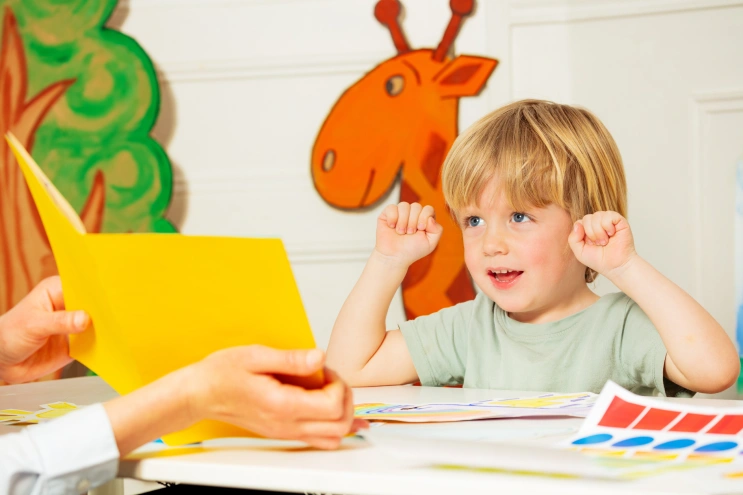
Making ABA Therapy Activities Work in Real Life
One of the most important goals of ABA therapy activities is helping children apply what they learn beyond the therapy setting. This process is called generalization, and it ensures that skills are useful in daily routines, not just during structured practice.
For example, a child who practices greetings in a session can carry that skill into community spaces like the grocery store or library. A parent can encourage this by prompting the child to say “hello” to a cashier or a neighbor. Similarly, turn-taking learned through board games can be used on the playground while waiting for a swing or slide.
Daily routines are excellent opportunities to reinforce skills. Snack preparation can support sequencing and independence, while counting food items during shopping builds math concepts. The more children practice across settings, the stronger their skills become.
Families play a central role in generalization. By modeling, prompting, and celebrating small successes in natural environments, caregivers help children gain confidence and independence. This bridge between structured teaching and real life is what makes ABA therapy activities meaningful for long-term growth.
Tips for Success with ABA Activities
ABA therapy activities are most effective when they’re delivered with intention and care. Below are five practical tips to help make your time with your child more successful, productive, and engaging:
1. Use Clear, Consistent Prompts
Children learn best when expectations are simple and predictable. Use the same words and gestures when giving instructions. For example, instead of saying “Clean up your toys now,” try using a consistent phrase like “Time to clean up.”
2. Reinforce Effort and Progress
Positive reinforcement is a core principle of ABA. Praise the child not just for getting the right answer, but for trying hard, staying focused, or showing improvement. You can use high-fives, verbal praise, small rewards, or token systems.
3. Keep Sessions Short, Fun, and Achievable
Long or difficult tasks can lead to frustration. Break activities into small steps and celebrate each success. Use preferred items, games, or movement breaks to keep things fun and engaging.
4. Gradually Increase Complexity
Start with simple goals that the child can accomplish with support. Once they show success, increase the difficulty by adding new steps, reducing prompts, or changing the setting. This is known as prompt fading or generalization.
5. Mix Structured Tasks with Play-Based Teaching
Balance table work or structured drills with natural, play-based activities. This keeps the child engaged and helps transfer skills into everyday life. Use the child’s interests—like bubbles, cars, or music—to guide the learning process.
Things You Should Know About ABA
Get the must-know facts about Applied Behavior Analysis—all in one guide
Free downloadConclusion
ABA therapy activities are most effective when they’re engaging, goal-oriented, and tailored to the child.
Above all, remember that progress takes time. Celebrate small wins, stay consistent, and meet each child where they are. When ABA therapy activities are thoughtful and personalized, they don’t just teach new skills—they help children build confidence and thrive.
If you’re looking for expert guidance or one-on-one support, the team at Mindful Sprouts is here to help.
We offer individualized ABA therapy and Speech and Language therapy designed to meet your child’s unique needs. Contact us today to learn how we can support your family on the journey toward growth and independence.
Follow us on Facebook, Instagram, LinkedIn, and X (formerly Twitter) to stay on top of our latest updates.

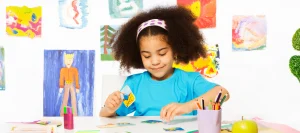




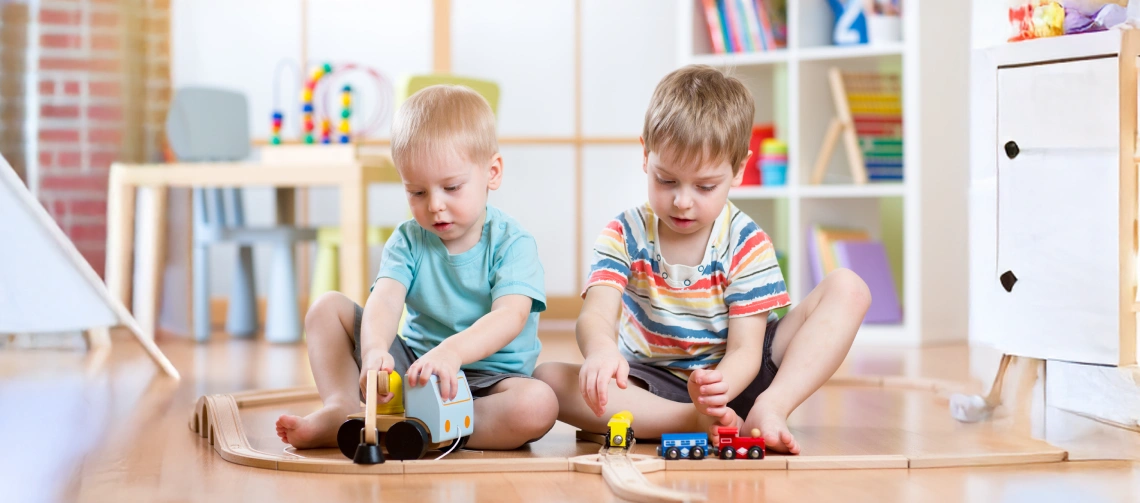
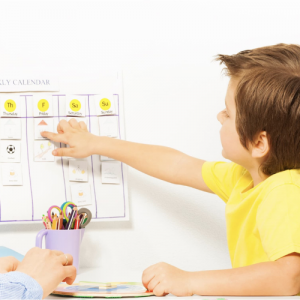
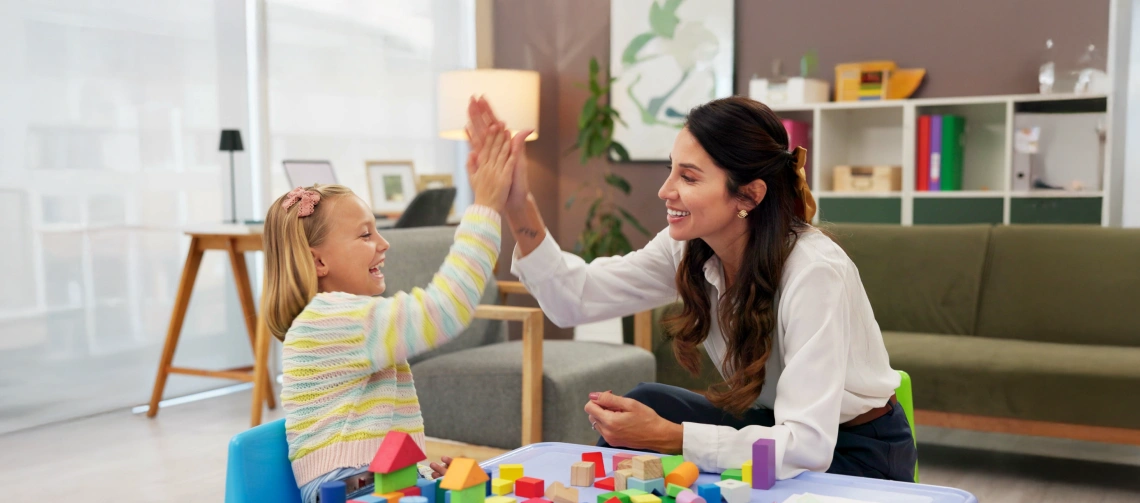
Leave A Comment